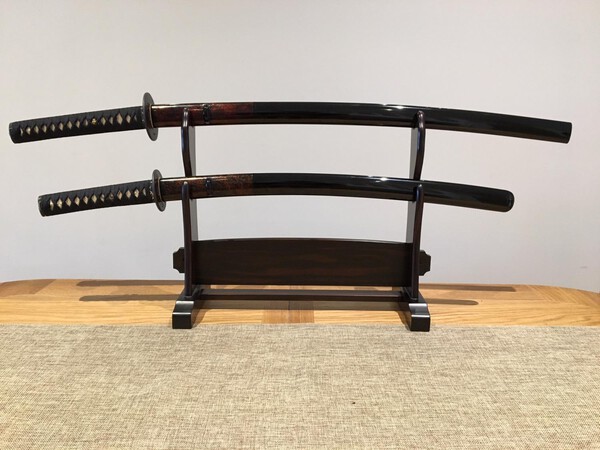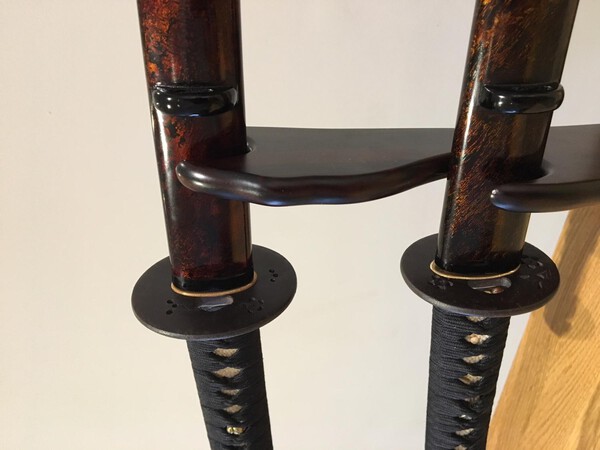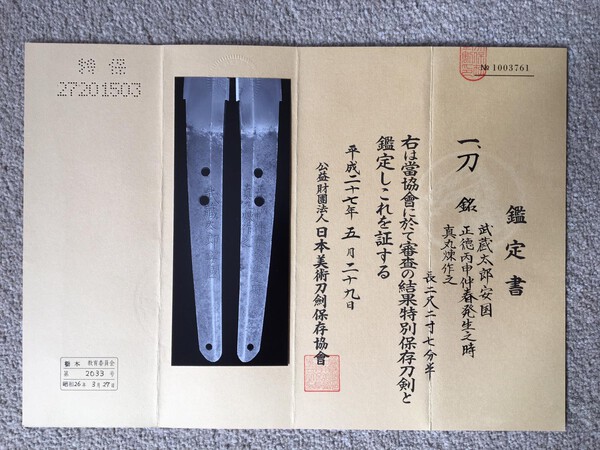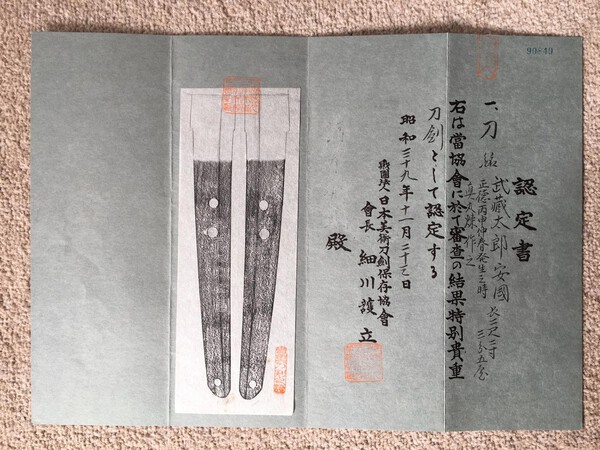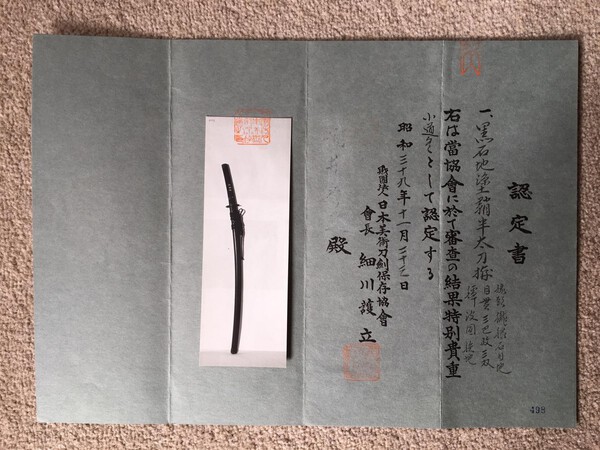-
Posts
118 -
Joined
-
Last visited
-
Days Won
1
Content Type
Profiles
Forums
Events
Store
Downloads
Gallery
Everything posted by general_piffle
-
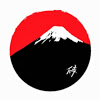
Are there any good dealers of papered swords in the UK ?
general_piffle replied to Jon's topic in Nihonto
I'm based in the UK and have gone about buying 2 swords that were located in Japan, my written Japanese is virtually non-existent and my spoken Japanese is very basic. One, a wakizashi where the dealer spoke little to no English I got Pablo Kuntz to help me, he instructed his contact in Japan and for a small fee the sale, paperwork, etc. were finalised. The transaction went very smoothly. The other was via a Japanese dealer who understood English pretty well. So, I undertook the importation myself and it was pretty straightforward. I was fortunate not to fall foul of customs when the package arrived in the UK. One UK dealer I can recommend who I've had good dealings with is Ian Chapman (also a member of the To-ken Society), he once found me my first ever piece, which I still have - a koto katana. I have no business interests with anyone named above, this is simply my experience. Hope it helps. -
Yes, you're right about the powder. Here's a comparison of just 2 characters, 2 pics (actual and rubbing) from a papered Kaboku and a pic from the example above. They're quite different, not just in form but what I would describe as 'surety' or 'positivity of stroke' when engraving. The example above seems almost timid/apologetic and the papered versions of the same characters have a definite confidence about them.
-
Almost a year old, but 1 year in nihonto is a single breath. This mei looks very suspect to me. The piece itself has little to none of the classic Kaboku hallmarks, that I can see. Personal opinion - but if it's genuine I'd be amazed.
-
At my request, Markus Sesko put a PDF together for me of Kaboku's students. Markus has always been brilliant in sharing and collating this sort of information. I've attached the PDF here to benefit others also fascinated by this sword-smith and his apprentices. KabokuStudents.pdf
-
Also fascinated by Kaboku, I started studying his apprentices and ended up with a beautiful wakazashi and a very powerful katana both by Musashi Taro Yasukuni. Both lovely pieces with more than a small influence from Kaboku. I look at them as a blend of skills, materials, and influences between the two sword-smiths.
-
Hi Christopher, in my humble opinion if you want to spend your money on restoring this sword (regardless of its value, sentimental or otherwise) because in its restored state it will bring you even more pleasure than it does now then I would say that's money well spent. Go with your heart and as you've already identified you will need a trained expert to polish. Personally I would stick with Japan for polishing as it's the birthplace of the sword. I can recommend Mr Kenji Mishina in Tokyo. If you would like further details please feel free to message me. I have no dealings with him other than having been a customer of his and have found him to provide an excellent service, although he does have quite a long waiting list. But then a sword which has already been here for several hundred years can probably wait a little longer for the right polish.
-
I have two katanas and a wakizashi. The katanas are this humble but purposeful Taira Takada and a much more flamboyant beefy Musashi Taro Yasukuni from 1716 (think Sword of Doom...) plus the wakizashi is also an earlier Yasukuni from when he was under the instruction of Omura Kaboku - both of these have papered very well. I decided to polish it before shinsa and have used it to create a daisho. A couple of pictures attached. I will continue to study it and have no real desire to move it on and take in more than I already have - this contrasting mix is enough for me.
-
Yes, just found this on nihonto.com: There are different schools of thought on the quality of Bungo (豊後) swords made in the Shinto period. An immediate response from many “sword experts” when Bungo(豊後) swords are mentioned is that they are not swords of great quality. Others feel that they are good swords. Perhaps a foundation of this opinion difference is that if you look at the structure of Bungo Takada (豊後高田) swords, you will see that they were made to satisfy practical rather than artistic needs. Indeed, at times of war they were sought out because of their cutting ability and sturdiness. Bearing in mind mine is koto and not shinto I'm happy with that. A sword made for cutting rather than admiring.
-
Interesting thanks. I've also heard that the koto blades from this school were of superior quality than the shinto blades but I guess this depends on the smith. Also without a mei we'll never know for sure the school but this is at least a good approximation. Believe they were known for their excellent cutting ability from something I've read and I can see from faint 'blocking' marks in the mune mine has certainly been used in battle during it's 500 or so years on earth.
-
I recently had my first ever katana polished and sent for shinsa at the NBTHK in Tokyo. It's a humble but well made mumei katana 64cm. Now accredited to the Taira-Takada school of the Bungo province, a koto katana created during the Muromachi period. Any insights or knowledge on this school or period in history gratefully received. Thanks in advance.
-
Thank you all for your insights. Much appreciated.
-
This thought popped into my head today and I appreciate it's a bit of a 'piece of string' question because there are many variables. For example, thickness/size of a katana to start with and variations in different styles and approaches by different polishers. But I wanted to find out more about polishing as part of a katana's life. Roughly how many polishes would a katana undergo until it was better to 'leave as is'? Why/when would a katana typically be polished? How much material might be removed in a typical polish that doesn't include any repair work? Any other interesting notes or insights around polishing? For the queries above I'm assuming the polisher is traditionally trained and knows what they're doing. Not some butcher with a belt sander! Thanks in advance for your thoughts.
-
Art, like beauty, is in the eye of the beholder. If someone doesn't like a Brancusi sculpture they will not perceive it as art, so for them it will never be, even though many might disagree. Art is not a democracy. If 200 people say the Brancusi is art then it is for them. But for 20 or 2000 it might not be. I'm using sculpture because I believe this is the fine art channel that nihonto are closest to. Equally some nihonto will excel as an example of their type and others will only ever be 'so so'. Craftsmanship and design (form follows function) are also key to great nihonto - craftsmanship is also key to art. For example, Brancusi would not have got far without mastering the lost wax technique. This is my view but I make it having seriously studied fine art and art history for around 7 years and being fortunate enough to have been granted a place at Chelsea School of Art on their BA Hons Sculpture course when it was widely recognised as one of the best in the country. Many moons ago.
-

Trying Out One's New Sword
general_piffle replied to BIG's topic in General Nihonto Related Discussion
Steven Thanks for your view. I would not ask for myself if I weren't interested in understanding more. For example, I'm interested in Peter's comment 'starving ronins, grazy samurai' in relation to Midgely's definition of tsujigiri. Whether or not Peter wishes to expand is entirely up to him. With regard to asking other members questions, as Midgely says on page 164 "Isolating barriers simply cannot arise here". Best Joel -
Thanks Jussi. This is what Mr Mishina had to say when the sword arrived in Japan back in February: "The sword arrived safely and it looks like a koto of Bizen Province" Now Mr Mishina has completed the polish it will be very interesting to hear what the NBTHK experts have to say. Assessment will take place in Japan this month (September). I'm not hoping for any particular outcome, I think this is just part of the learning process.
-

"forgive, Don't Forget" Documentary
general_piffle replied to md02geist's topic in General Nihonto Related Discussion
Looking forward to watching this. Although I'll have to watch it on my MacBook Air (at least it's a 13" screen) via my SuperDrive as unfortunately it's only available as a Region 1 DVD (US and Canada). Nothing for Region 2 UK/Europe and trying to buy as a file via the Apple Store didn't work as I'm UK based and this also seems to have a US bias. Not very forward thinking of the distributors! That said I've bought the Region 1 DVD which 'should hopefully' play on my SuperDrive so I can watch it on the laptop... -

Trying Out One's New Sword
general_piffle replied to BIG's topic in General Nihonto Related Discussion
Could you expand please Peter on your original posting of the PDF (I read it with interest) and your reply above? I'd like to understand your view more completely. Thanks. -
Quick update. The sword has now been polished by Mr Mishina and is set to go to shinsa in Tokyo in September. After this it will be returned to me. Let's see what the experts have to say.
-
That's interesting Stephen. Thanks for sharing. Although I've decided I don't really mind the kitae ware, as long as the sword is not at risk. Out of interest for future reference, what sort of reputation does Moses Becerra have as a polisher? Thanks.
-
Josh, completely appreciate what you're saying. Now I know what the mark is (and that it's harmless) I see it more as part of the sword's character. It's in fine old polish and will be staying that way. It's a wonderful Musashi Taro Yasukuni katana and I feel honoured to be its custodian in my lifetime
-
Thanks guys, my main concern was that it 'might' be something to worry about and maybe send the sword for a polish to rectify but am happy to hear it's quite common, especially in swords with masame hada. I've learnt a bit more and my Yasukuni katana is all good. That's a double result.






